► Merc’s facelifted EV flagship driven
► Even longer range adds appeal
► Is it really the S-Class of EVs?
The Mercedes-Benz EQS is a flagship electric car that since its launch in 2021 has struggled to make an impression in the chauffeur-driven market sector – in the UK at least. The car is a technical tour de force which aimed to replicate the success of the S-Class, but this far has been roundly trounced by the BMW i7.
But Mercedes-Benz is fighting back. It’s hoping to improve its luxury EV offering with a light facelift, which improves headline range and efficiency. As it stands, the EQS is a rear-wheel drive, 5.2m-long behemoth with a battery pack as big as Sizewell B, a touchscreen twinned with an IMAX cinema and enough machine learning to worry Skynet. Can the 2025 model year tweaks add to its undoubted tech bro appeal? Read on.
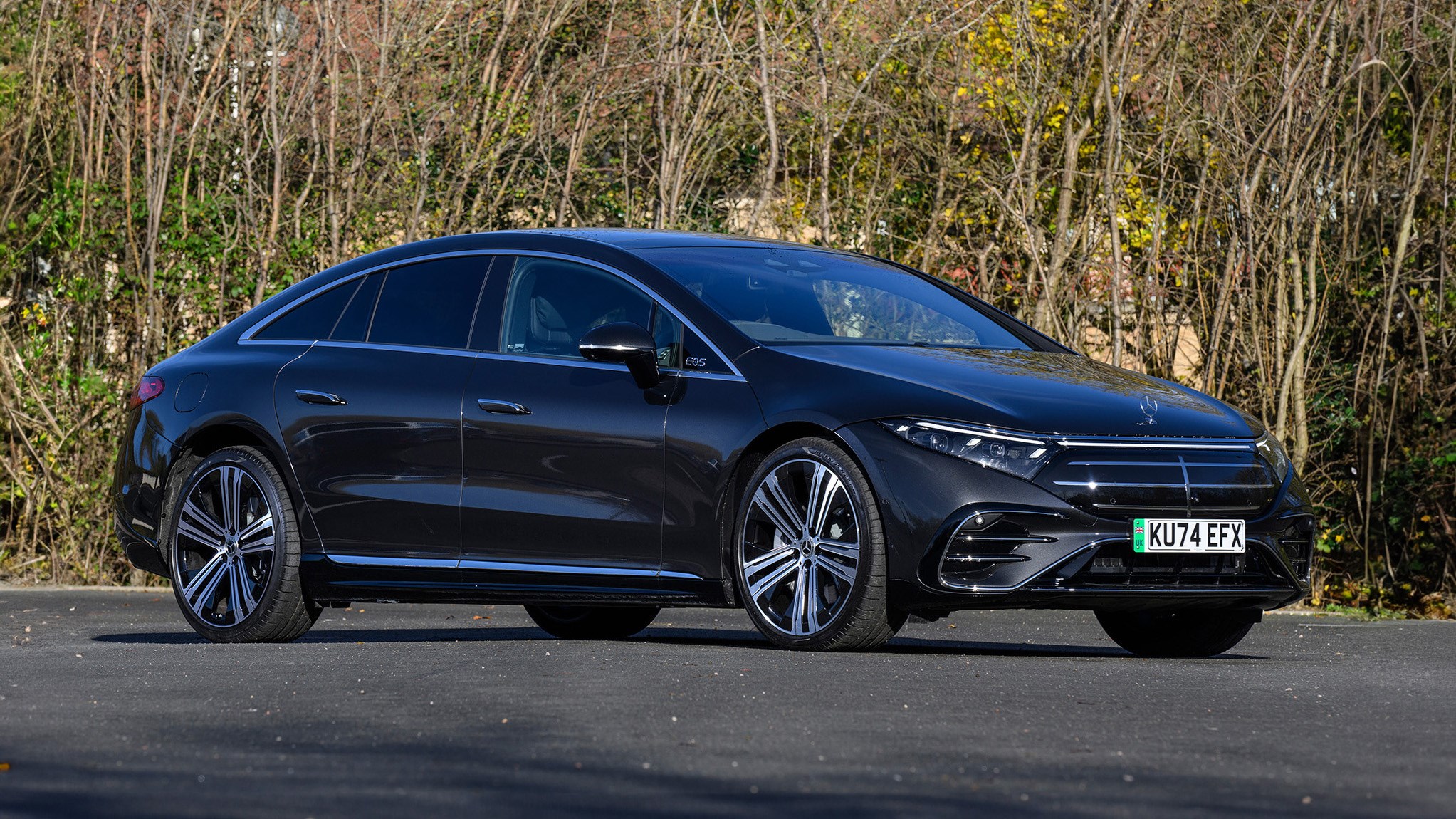
At a glance
Pros: Real-world driving range of 375 miles, imperious motorway performance
Cons: Not as refined as we’d like, body control not as good as BMW i7
What’s new?
It’s a little more than a model year update, but less than a full-bore facelift. So, much about the unusual-looking EQS five-door hatch remains the same. As before, it features a stubby nose and rear sharply-rising rear, with its domed, elongated passenger cell between. It’s certainly sleek, and Mercedes claimed its 0.20 drag efficient made it the world’s most aerodynamic car at launch.
The main change is that a larger battery pack, which jumps from 108kWh to 118kWh, and brings a longer driving range. But there are other tweaks to the specs and model range in order to keep things fresh. These updates are much needed, as its most direct rival, the BMW i7 is cleaning up in the luxury car market. These two rivals approach things slightly differently, however – the i7 is an electric version of the 7 Series, while the EQS uses a bespoke Mercedes-EQ electric vehicle platform.
What are the specs?
Mercedes-Benz originally launched the EQS with a single model – the standard 450+. But this has already expanded to two versions. In addition to the original, you can now buy the EQS in form, and both are rear-wheel drive and come with a single electric motor.
The trim levels are Premium, Premium Plus and Business Class for the 350, and AMG Line Premium, AMG Line Premium Plus and Business Class for the 450+. You can buy an AMG version, but we cover this in our separate Mercedes-AMG EQS AMG 53 review.
Range and charging
Mercedes says the EQS packs its most energy-dense batteries to date, but the salient point is just how many: the stack’s capacity is now an immense 118kWh. That’s almost 30Kwh bigger than the EQC’s. That endows the EQS 450+ with a range of 511 miles on the WLTP test cycle. And in a week’s testing, the trip computer recorded a consumption of 3.2 miles per kWh, not far off the official figure. On our mixed driving route with plenty of motorway driving, that equates to 375 miles of real-world driving.
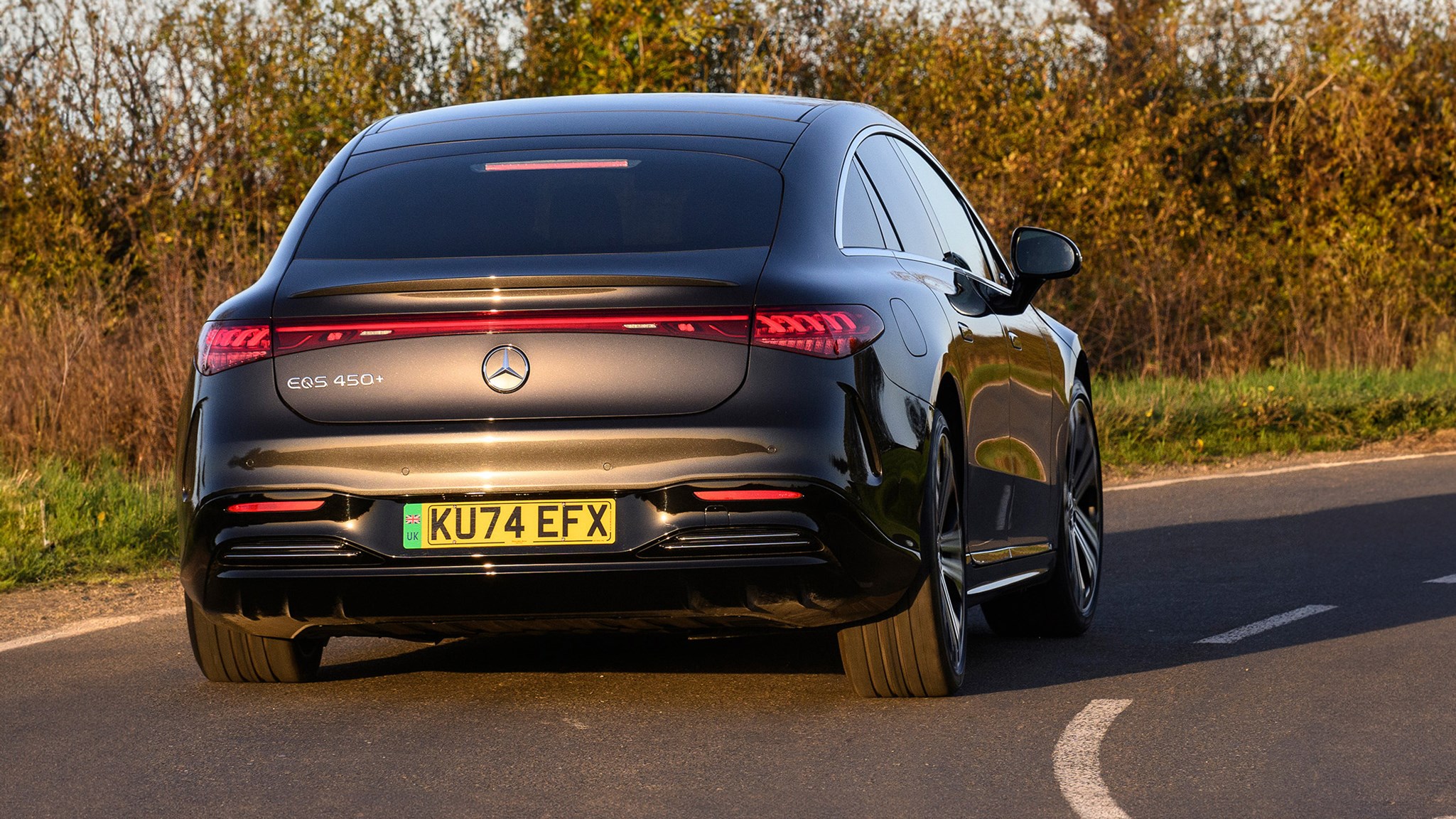
The EQS’s standard AC charger can handle a 22kW wallbox (requiring triple-phase electricity supply) – it’ll take the equivalent of two nights’ sleep to recharge on a 7.4kW charger. Out and about, the EQS tops out with a 200kW DC charger: expect it to take 30 minutes to go from 10% battery charge to full.
How does it drive?
There’s a choice of powertrain soundtracks – we opt for Silver Waves – and many lighting variations from the LED strip atop the dash. Accelerate hard and the lights glow red, accompanied by an unexpectedly bassy, burbling synthesised noise which makes a decent fist of echoing the ebb and flow of e-motor performance. I found it all great fun, but I accept that plenty of people will silence the lot.
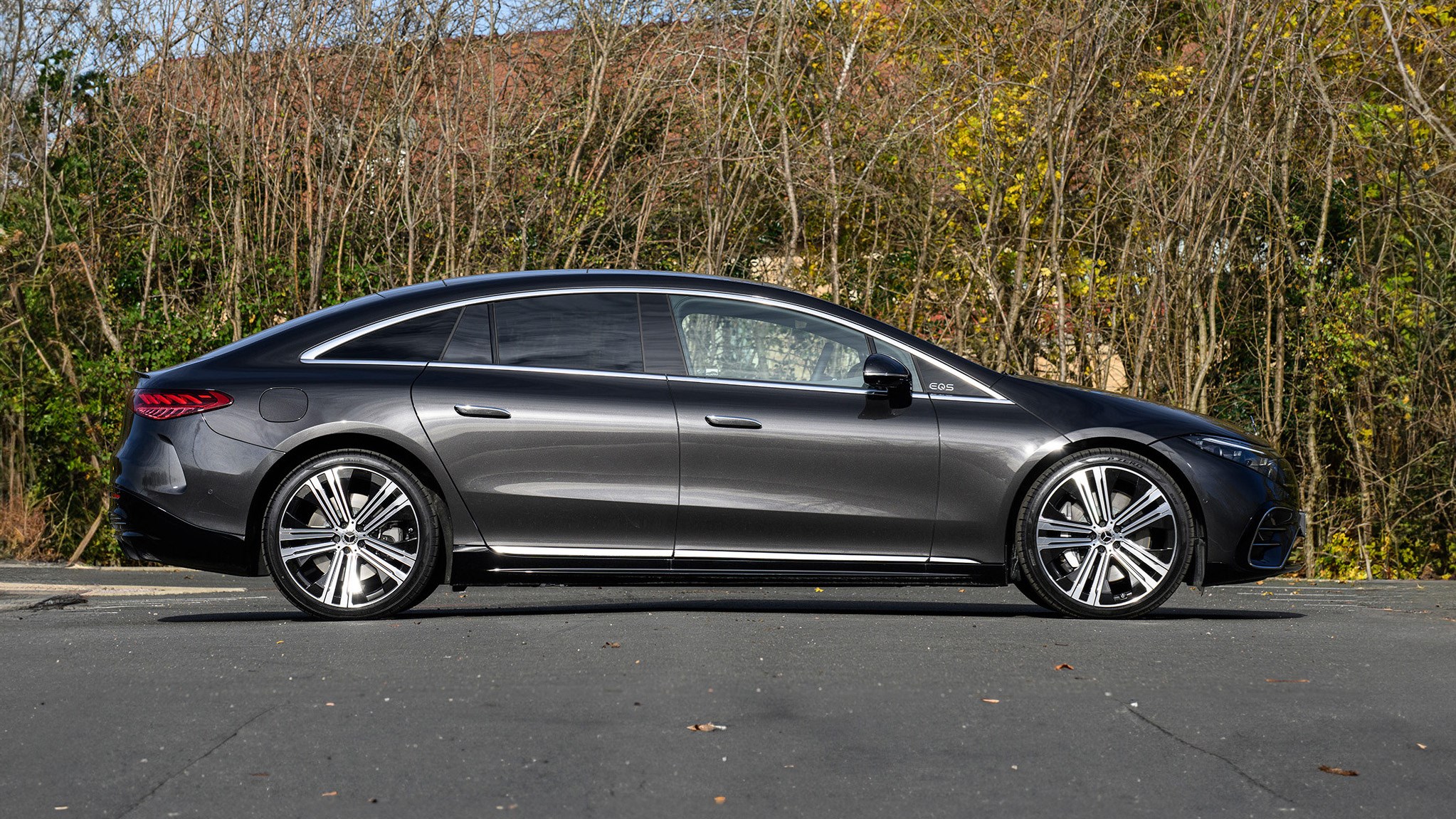
Acceleration is Golf GTI brisk, so miles off the scenery-jumping capability of more outrageous Teslas. The EQS 450+ has a single motor on the rear axle – sufficient for a 0-62mph sprint in 6.2secs.
And you can carry a fair bit of speed into roundabouts and corners: the 450+ has good sticking power on the front-axle even with the Goodyear Eagle F1s gently squealing a little harmony with the Silver Waves soundtrack, under near 2.5-tonnes of car. In lower grip conditions, though, the EQS also did more than its fair share of drifting under acceleration – a remarkable party trick, though not one your important rear passengers will usually ask for.
The EQS is a big car, but it’s more agile than you expect thanks to rear-wheel steering. The standard car gets 4.5 degrees of turn to boost stability at high speeds or corner at lower speeds, but our test car had the optional-10 degree pivot (which is available as an over-the-air update, demonstrating how the EQS can roll out optional features).
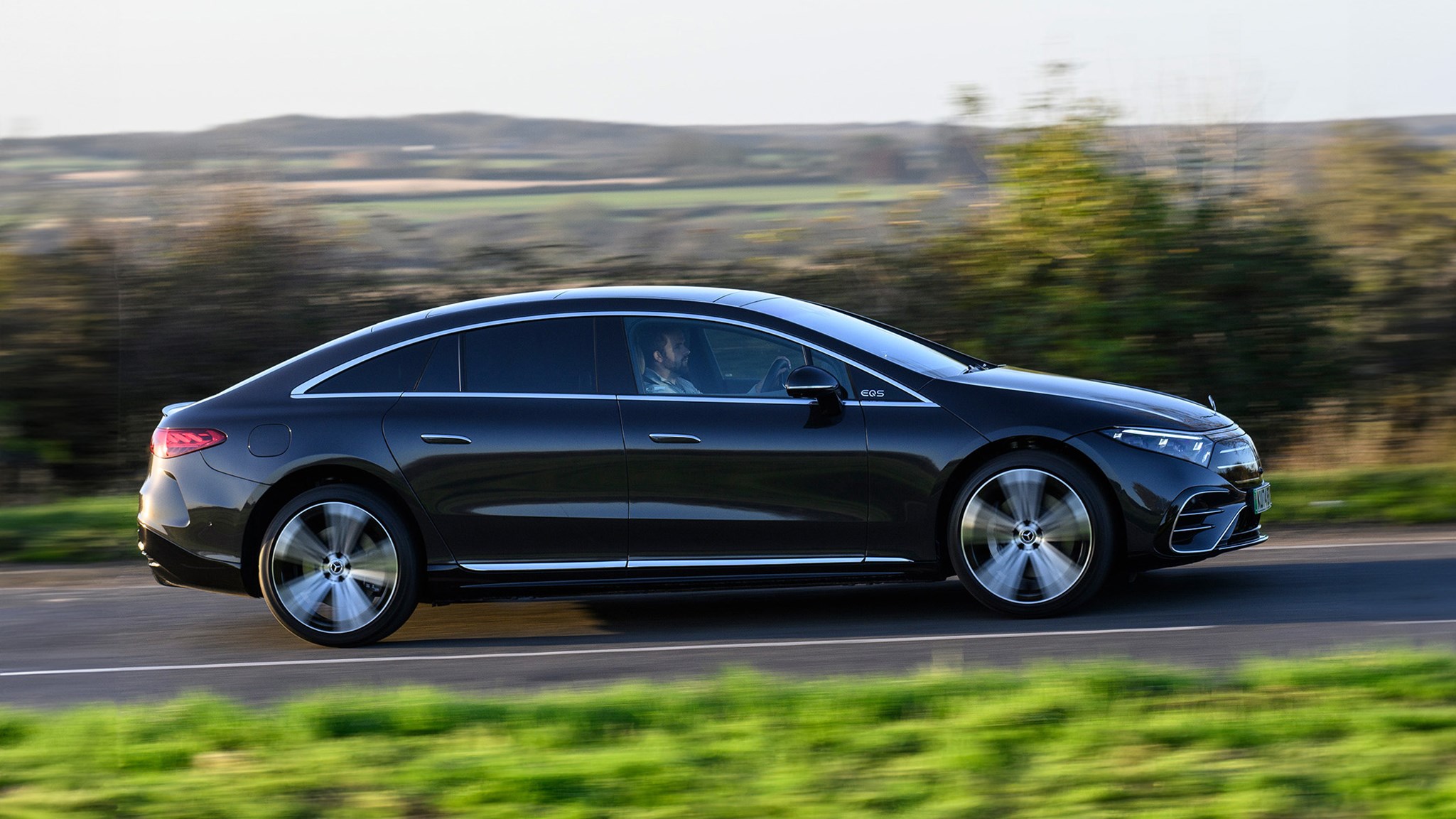
You certainly notice it sharpen up the turning circle, making the genteel, lightweight steering feel faster than it is.
But the overwhelming EQS sensation is its barge-like ride. It’s able to remove most bumps and potholes – but it does feel overall lumpier and a little busier than its ICE-powered cousin. Although the ride is soft, there’s more body movement at speed than expected, with noticeable rocking from side to side on some surfaces. Refinement is also a bit of a disappointment, with more road noise than expected.
Another dynamic drawback is occasionally squidgy, inconsistent brake pedal feel. Drive a bit less hurriedly than us and you won’t need them: tap the steering wheel paddle to engage ‘increased’ regenerative braking, and the car will automatically slow sharply when you lift. Or opt for ‘normal’ levels or no regeneration if that feels more natural.
What about the interior?
Forget pop-out door handles, the EQS has pop-out doors. Approach and it swings open, and as you settle into the driver’s seat with its cotton-wool comfy head restraint, step on the brake and it closes again. No wonder this luxobarge claims up to 350 sensors, powering myriad features from congested highway autopilot to continuously calculating where to stop for energy.
Mercedes’ latest head-up display projects animated navigation arrows onto the road ahead, which dance along the intersection to show where to turn. And there are barmy Energizing Comfort moods: opt for Sea Breeze to hear whale music and watch waves crash across the Hyperscreen, while the seat massages your butt and air vents blow cold air.
Next you have to come to terms with… Hyperscreen! Fundamentally, this £8000 optional feature is a bank of conjoined screens almost 1.5 metres wide, with one for the passenger to watch movies or adjust car settings, a vast central touchscreen and the driver’s configurable digital binnacle. There’s a small control panel for stereo volume, dynamic mode and hazard warning in the centre console, but switches are at a premium and the old Merc touchpad or clickwheel are nowhere to be seen.
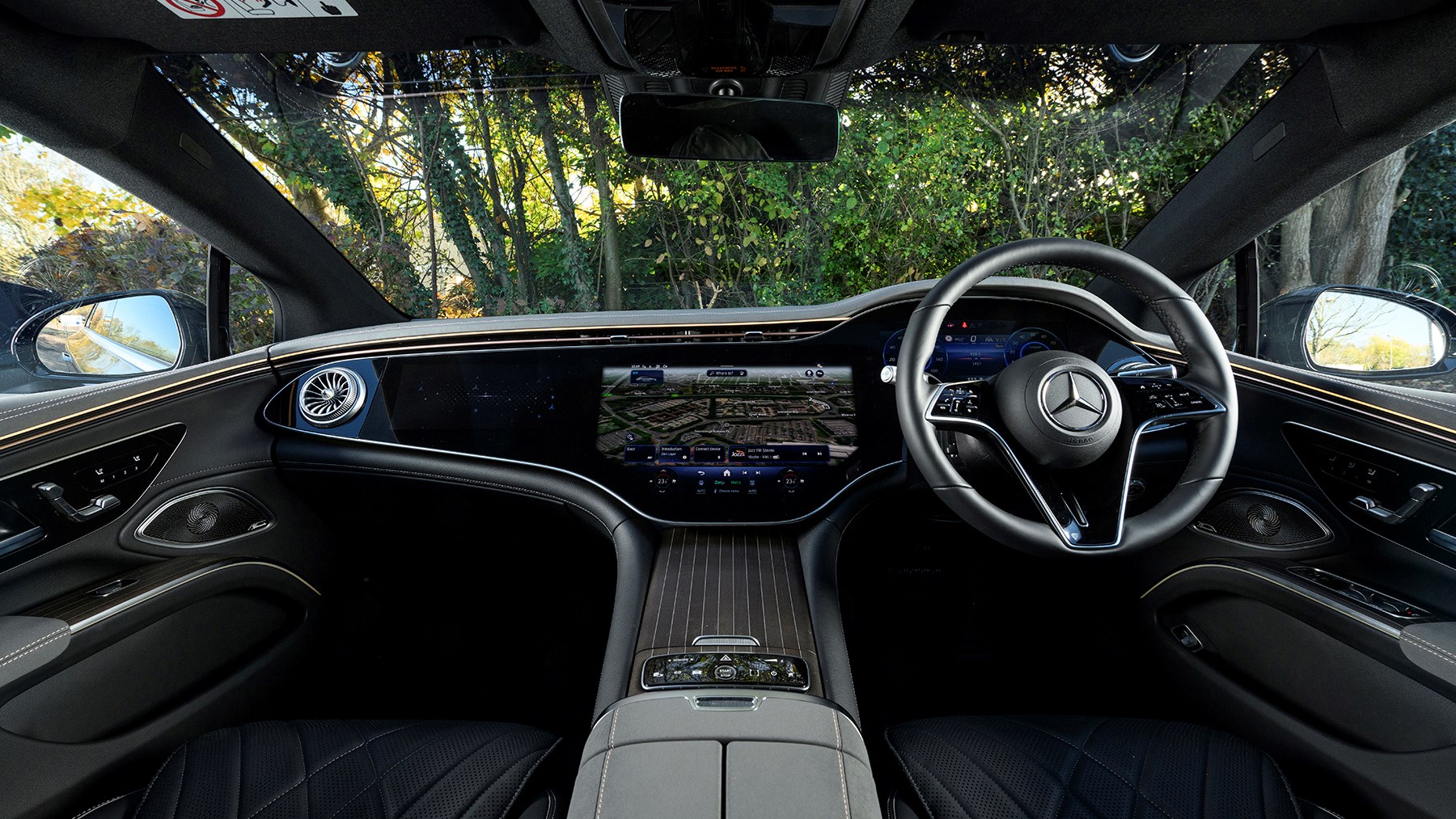
The car’s operations are started with a pin code, and it’s linked to the Mercedes Me app on your smartphone. Store your preferences in a profile, even down to your height which helps the EQS set up your seating position, and these settings can be taken from Merc to Merc via the app. And no fiddling around with hidden switches for lumbar support: trace a line on a graphical representation of the seat to select how much bolstering you require.
You can establish different charging routines for different locations (such as at home or the office), and prime the cable to unlock at the end so other users can take over the juice. The air filtration system compares external pollution with the hermetically sealed, prodigiously spacious cabin: you’ll blanche as it tots up a decrepit van’s diesel particulates.
Finally and more prosaically, the Porsche Panamera-style hatchback boot swallows 610 litres of cargo, or 1770 with the rear seats folded.
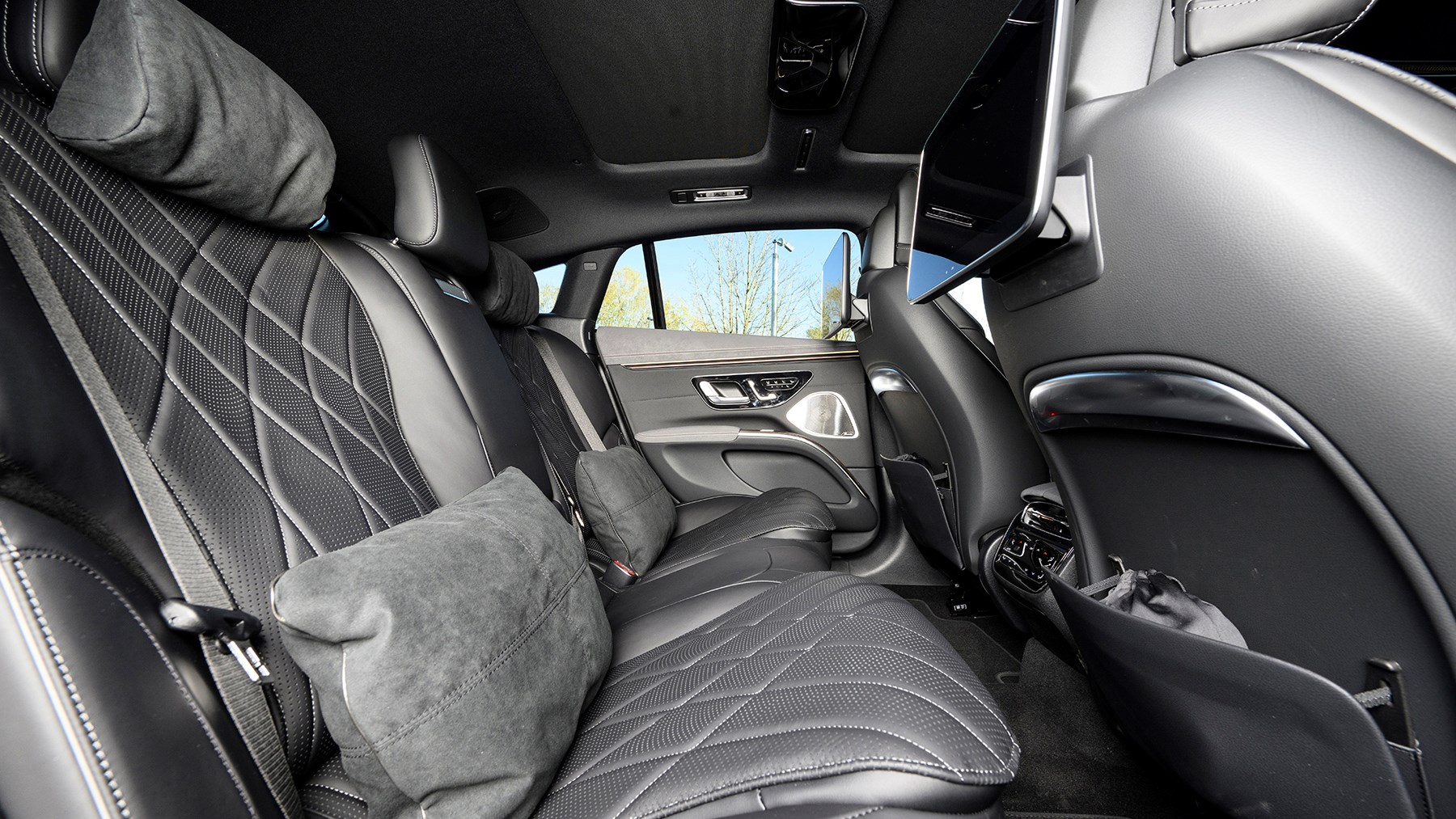
Before you buy
The specs of the EQS 450+ are certainly attractive, with its 118kWh battery pack (up from 108) promising 360hp, up to 511 miles of driving range per charge (according to WLTP testing), and a charging time of as little as 31 minutes for a 10 to 80% top-up.
In our experience, however, we’ve found that none of these things quite live up to expectations, even though the real-world numbers are still very impressive.
Verdict
As Mercedes’ first electric car to sit on a bespoke EV architecture, the EQS is a little bit disappointing. Full of technology, and with a strong range and good EV-esque acceleration, it’s pretty much everything you’d expect from a flagship electric car.
There are just two problems: Firstly, the BMW i7 offers more refinement and a better ride than the EQS, as well as offering a more luxurious rear seat – surely a major factor in buying a car like this. Then there’s the ride, handling and refinement, which are not so good, even if the driver assistance systems and motorway composure are still exceptional.
As for whether it’s the S-Class of EVs, the answer is no. Simply put, the BMW i7 does everything the EQS does but better.
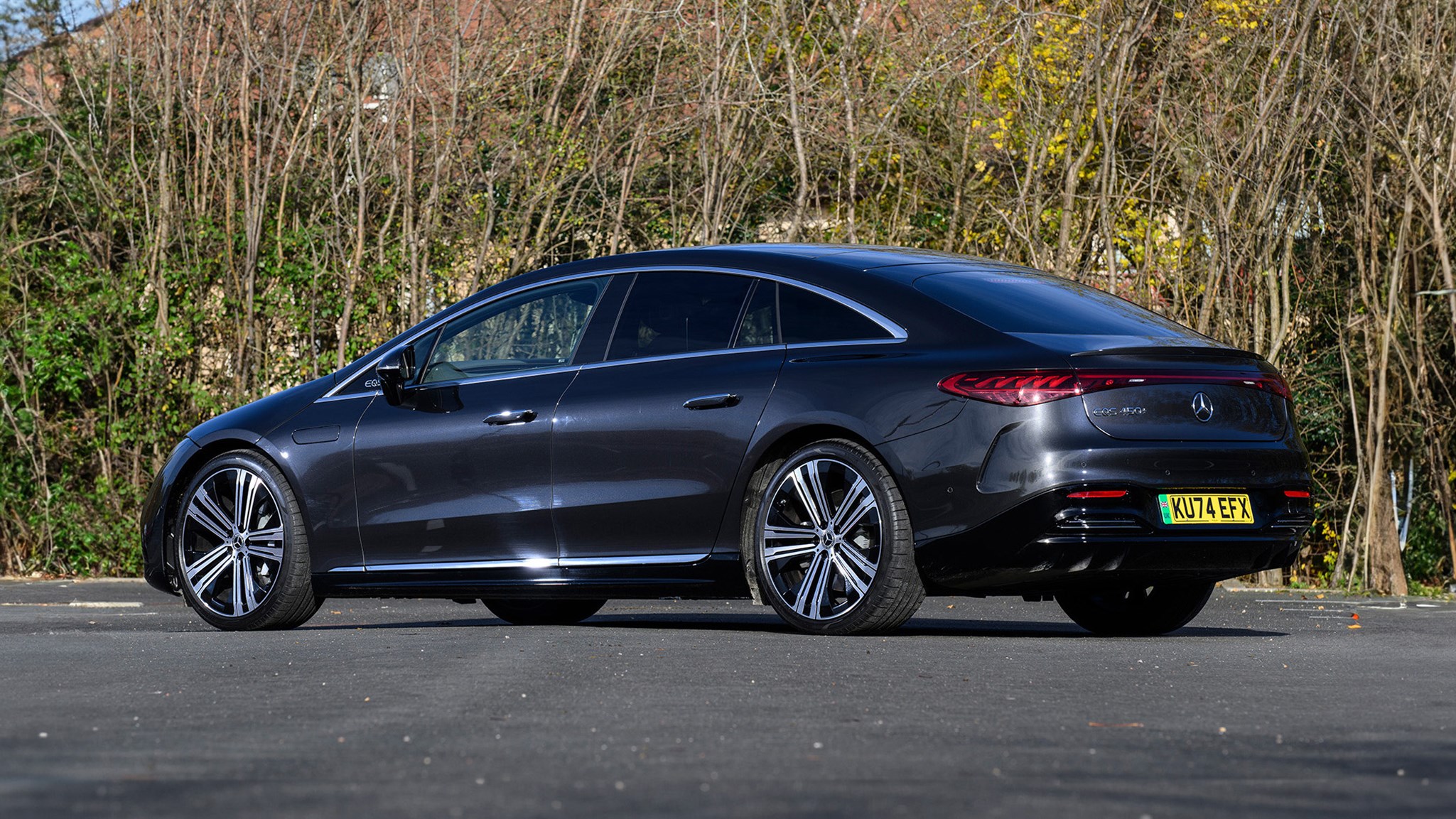
Read more Mercedes reviews here